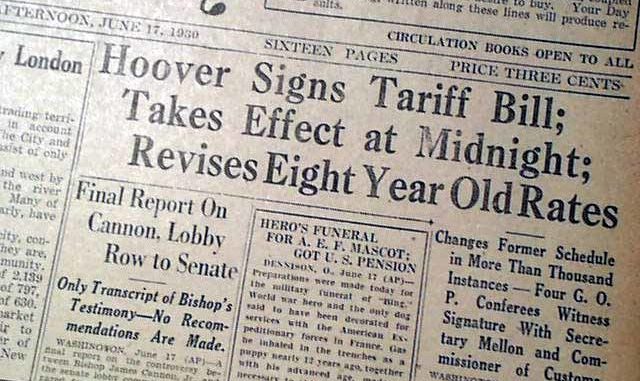
It was hundreds of years ago that American colonists began to grapple with the idea of a trade policy (specifically, that of Great Britain). In the mid-1760’s, The Townshend Acts were developed, charging Americans duty on a variety of different goods– paper being one of them. This tax was not something that pleased the people, creating tension and eventually leading to the “Boston massacre” in 1770 and the Sons of Liberty’s “tea party” in 1773.
The American Revolution was driven by the motto, “Taxation without Representation.” It was under the Articles of Confederation, however, that citizens pointed out that their federal leaders had no right to tax any of their goods any longer. However, this model was not practical, and was soon done away with. As America’s size and population began to expand alongside its industrialization leading up to the start of the Civil War, the challenges it was set to face began to grow just as fast.
From the late 1700’s up until 1913, the United States federal governments only source of revenue came from taxes on imported goods as well as domestically manufactured goods. Until the late 1800’s, newsprint was made from cotton, until it switched to wood pulp. However, just as the nation was ever-expanding, so was the newspaper industry, making it hard for newspaper publishers to keep up with the need for wood pulp.
International, imported paper controlled 75% of the newsprint market in the United States, which caused the newspaper publishers to complain due to the monopoly and high pricing. Publishers lobbied for the elimination of the tariff on newspring imported from Canada. In 1913, free trade for newsprint and wood pulp resulted from The Underwood Tariff Act, as well as the ratification of the 16th Amendment.
This tension continued throughout the War of 1812 and beyond, and believe it or not, still affects American citizens to this day. Following a tariff put in place in 2015 on Canadian supercalendered paper, the United States Department of Commerce issued a tariff in January 2018 that ranges anywhere from 0.65% to 9.93% for Canadian producers of uncoated groundwood paper. Prior to these two tariffs, the last tariff on paper in the United States was issued over one hundred years ago, in 1913.
Just as the early American newspaper publishers didn’t want the tariff, modern day newspaper publishers don’t want a tariff either, and even 34 member of the House and 8 members of the Senate have complained about the tariff. Warren Harding, a republican presidential candidate who replaced Woodrow Wilson, ran with the slogan “America First.” Harding was a huge advocate for the maintenance of free trade on newsprint and pulp. Between 1913 and 1929, there were about 25 new newsprint mills established in Canada, leading to a period of prosperity for not only papermakers but also publishers in North America.
The paper industry has been shrinking for the past twenty-something years with the convenience of technology becoming more prevalent each and every day. This has caused hundreds of paper mills to shut down, even just within the past few years. Today, the exchange rate is around 80¢ to the United States dollar, compared to a dollar at par in 1913.
In a huge turnaround, the United States International Trade Commission reversed the Trump administration decision to impose tariffs on paper products imported into the U.S from Canada. However, the decline in the paper industry has more to do with the slowing-to-flat sales of paper products, print books, and the like, as well as the decline of the newspaper print business rather than the tariff. If you’re looking to keep the print and paper industry alive, head over to BrokenCartons.com to purchase the paper of your liking– tariff free.

Leave a Reply
You must be logged in to post a comment.